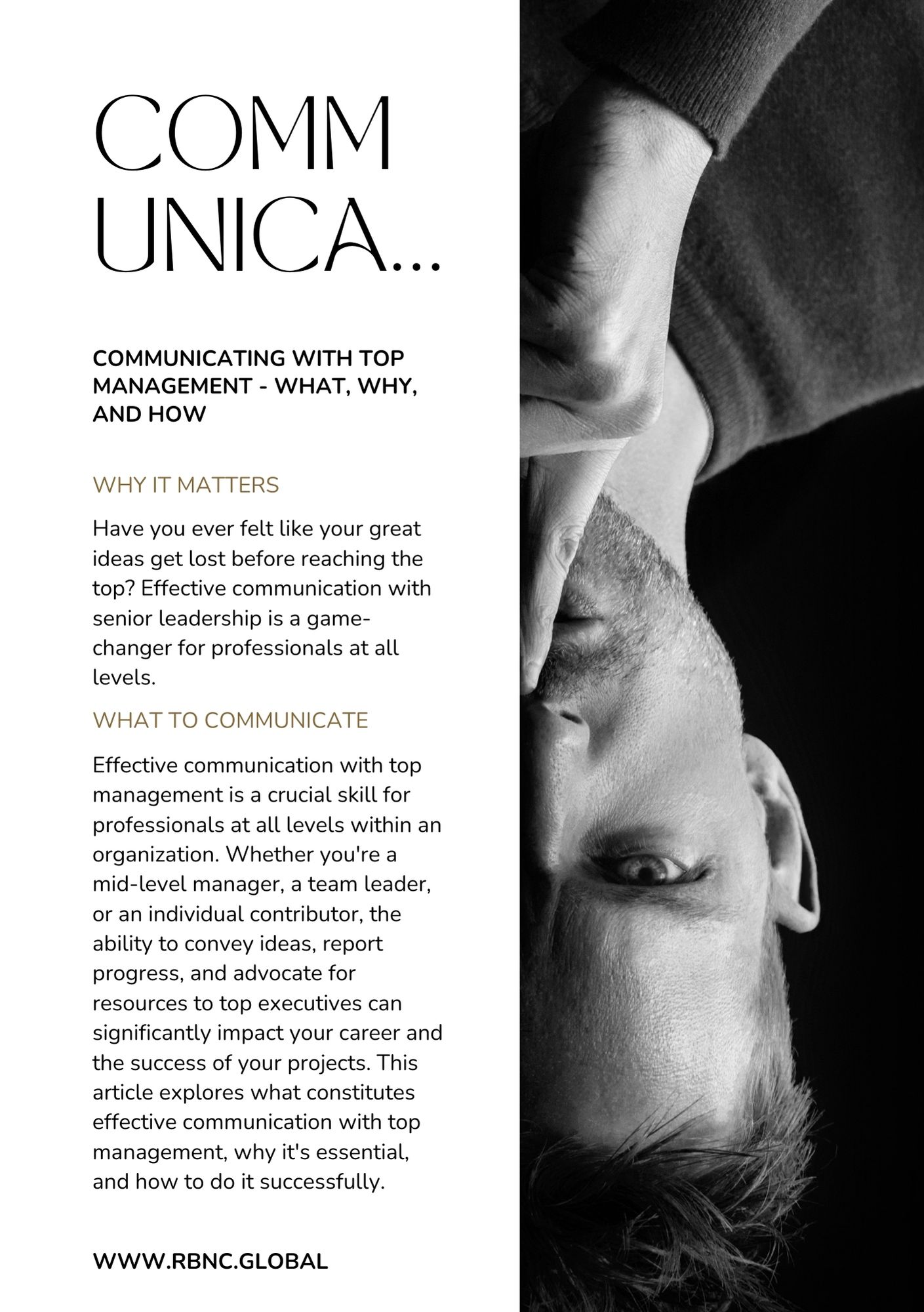Communicating With Top Management - What, Why, and How
Effective communication with top management is a crucial skill for professionals at all levels within an organization. Whether you're a mid-level manager, a team leader, or an individual contributor, the ability to convey ideas, report progress, and advocate for resources to top executives can significantly impact your career and the success of your projects. This article explores what constitutes effective communication with top management, why it's essential, and how to do it successfully.
KEY POINTS:
1. Importance of Communication with Top Management: Effective communication with senior leadership helps shape strategic decisions, boost visibility, secure necessary resources, build trust, and ensure project alignment with company goals.
2. Key Information to Communicate: Focus on strategic alignment, impact and results, challenges and solutions, resource needs, and innovation opportunities to grab top management's attention.
3. Effective Communication Strategies: Tailor your message, be concise, use data and visuals, frame information within a narrative, prepare for questions, follow up, and practice active listening to communicate effectively.
Why It Matters
Have you ever felt like your great ideas get lost before reaching the top? Effective communication with senior leadership is a game-changer for professionals at all levels. It allows you to:
- Shape the Future: Your insights can directly influence strategic decisions, impacting the company's direction.
- Boost Your Visibility: Regular communication gets your name recognized, opening doors for advancement.
- Get What You Need: Convincing leaders of your project's value secures resources for success.
- Build Trust: Valuable insights and updates build trust and credibility with executives, strengthening your professional standing.
- Ensure Alignment: Clear communication keeps your projects aligned with company goals and earns crucial support from the top.
What to Communicate
So, what kind of information grabs top management's attention? Focus on these key areas:
- Strategic Alignment: Show how your work directly supports the company's broader objectives.
- Impact and Results: Use data and metrics to showcase the positive impact of your efforts.
- Challenges and Solutions: Be transparent about roadblocks and propose actionable solutions.
- Resource Needs: Clearly articulate the resources (financial, human, technological) required to achieve your goals. Back your requests with solid reasoning and potential return on investment.
- Innovation and Opportunities: Share ideas for growth – new projects, products, or process improvements – that keep the company competitive.
How to Get Your Message Across
Knowing how to communicate effectively is just as important as what you communicate. Here are some key strategies:
- Know Your Audience: Tailor your message to resonate with the executives' priorities, concerns, and communication styles.
- Be Concise and Clear: Respect their limited time. Deliver your message directly, focusing on key points. Use bullet points, summaries, and visuals for clarity.
- Speak Their Language: Support your claims with data, evidence, and visuals. Charts and graphs make complex information easier to understand.
- Weave a Story: Frame your information within a compelling narrative. Stories make your message more engaging and memorable.
- Prepare for Questions: Anticipate what the executives might ask and have well-thought-out answers ready. This demonstrates your expertise and preparedness.
- Follow Up: Don't leave them hanging. Provide any additional information requested and keep them updated on progress. This shows accountability and keeps the conversation going.
- Practice Active Listening: Pay close attention to feedback and cues from the audience. Adapt your communication approach based on their reactions and needs.









